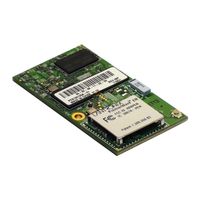Lantronix PremierWave Manuals
Manuals and User Guides for Lantronix PremierWave. We have 3 Lantronix PremierWave manuals available for free PDF download: User Manual, Quick Start Manual
Lantronix PremierWave User Manual (145 pages)
Embedded System on Module
Brand: Lantronix
|
Category: Control Unit
|
Size: 3 MB
Table of Contents
Advertisement
Lantronix PremierWave Quick Start Manual (12 pages)
Brand: Lantronix
|
Category: Motherboard
|
Size: 0 MB
Table of Contents
Lantronix PremierWave Quick Start Manual (10 pages)
Brand: Lantronix
|
Category: Motherboard
|
Size: 0 MB
Table of Contents
Advertisement
Advertisement


